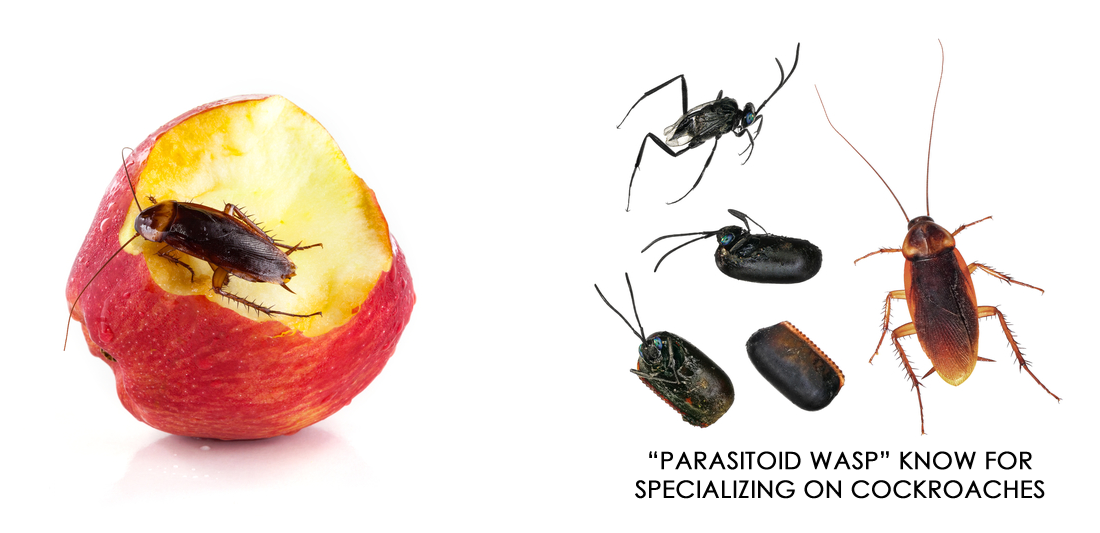Call today for an appointment! (903) 295-0166
AMERICAN COCKROACHES

The American cockroach is not the most common cockroach in American homes although it is the largest of the house-infesting roaches and a major pest in the United States. It’s reddish-brown and has a yellowish margin on the pronotum, the body region behind the head and it’s about 1.5 inches long or longer, it’s winged but seldom flies. It’s also commonly known as the water bug, the Bombay canary or the palmetto bug. They can survive up to two years, much longer than other cockroach types and spotting one can be particularly alarming. Of all common cockroach species, the American cockroach has the largest body size while nymphs feed and undergo a series of 13 moultings. The Immature cockroaches resemble adults except they are wingless.
HABITS ~
American cockroaches may move indoors when the weather turns cold, seeking warmer environments and food. They may enter houses through sewer connections, under doors, around plumbing, air ducts, or other openings in the foundation.
These insects can travel quickly, often darting out of sight when a threat is perceived and can fit into small cracks and under doors despite its fairly large size. It is considered one of the fastest running insects and is very active at night with its nocturnal vision and tends to shun away from the light.
American cockroaches are omnivorous and opportunistic feeders from eating crumbs found under appliances, in drains, behind kitchen cabinets, or on the floor to eat materials such as cheese, beer, tea, bakery products, leather, starch in book bindings, glue, hair, dried skin, plant materials, soiled clothing and pet food that is left uncovered.. They are particularly fond of fermenting foods and they have also been observed to feed upon dead or wounded cockroaches of their own or other species.
American cockroaches generally live in moist areas but can survive in dry areas if they have access to water. They prefer high temperatures and do not tolerate low temperatures. In residential areas, these cockroaches are common in sewers, basements, crawl spaces, cracks and crevices of porches, foundations, and walkways adjacent to buildings and may move outdoors into yards and humid areas like flowerbeds and underneath mulch piles during warm weather.
Their droppings are small with blunt ends and have ridges on the sides and they are often mistaken for mouse droppings. Other signs of their presence include egg capsules which are dark-colored. Egg capsules are sometimes glued to a surface near food sources and can be found in kitchens, behind appliances, bathrooms, laundry rooms, garages, and basements. They produce a pheromone that some people describe as having a “musty” smell, therefore, people with sensitive noses may notice this odor inside their homes.
THREATS ~
American Cockroaches can trigger year around allergic reactions and asthma in certain individuals such as children from house dust containing cockroach feces and body parts. They can also pose a severe health threat by picking up germs as they crawl through sewage or decaying matter then spreading disease-causing bacteria such as salmonella from their legs, spines, and body when later depositing it onto cooking surfaces or foods as they walk through it cause food poisoning.
PREVENTION ~
American Cockroaches may enter houses through plumbing, sewer connections, under doors, air ducts, or other openings in the foundation. The best way to prevent these cockroaches is by sealing up gaps, cracks in walls, around drains and plumbing pipes by using a silicone-based caulk or expansion foam. Make sure to check crawl spaces and vent them properly to prevent moisture buildup. You can also run water periodically in spare bathrooms to keep u-traps filled. Clean up spills and messes from counters, sinks, tables and never leave dishes piled up in the sink. It’s also good practice to store foods. Keep floors free of crumbs by vacuuming on a regular basis and keeping clutter off the floor, therefore, making the environment less inviting to the cockroaches. Other ways to help prevent infestations is to check materials for cockroaches and egg cases that can be brought in from grocery bags, boxes, furniture and much more…


































